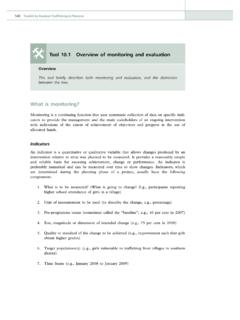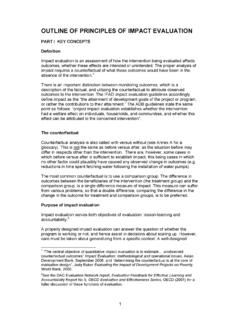Transcription of Sexual Violence Prevention: Beginning the Dialogue
1 Sexual Violence prevention : Beginning the Dialogue CDC Internal Workgroup Members Margaret Brome Janet Saul Karen Lang Rebeca Lee-Pethel Neil Rainford Jocelyn Wheaton Acknowledgments CDC wishes to thank the following people for their expertise and sound advice on how to present this important information: Karen Baker, National Sexual Violence prevention Center Kathleen Basile, Centers for Disease Control and prevention Shelley Bearman, Kansas Department of Health Gail Burns-Smith, National Alliance to End Sexual Assault.
2 Connecticut Sexual Assault Crisis Services Larry Cohen, prevention Institute Linda Dahlberg, Centers for Disease Control and prevention Rachel Davis, prevention Institute Marci Diamond, Massachusetts Department of Health Alisa Klein, Stop It Now Sally Laskey, National Sexual Violence Resource Center James Mercy, Centers for Disease Control and prevention Delilah Rumberg, Pennsylvania Coalition Against Rape Wendy Siebold, Michigan State University Nan Stein, Wellesley College Center for Research on Women Gayle Stringer, Washington Coalition Against Sexual Assault Program Suggested Citation: Centers for Disease Control and prevention .
3 Sexual Violence prevention : Beginning the Dialogue . Atlanta, GA: Centers for Disease Control and prevention ; 2004. prevention : Beginning the Dialogue One day, a fisherman was fishing from a river bank when he saw someone being swept downstream, struggling to keep their head above water. The fisherman jumped in, grabbed the person, and helped them to shore. The survivor thanked the fisherman and left, and the hero dried himself off and continued fishing. Soon he heard another cry for help and saw someone else being swept downstream.
4 He immediately jumped into the river again and saved that person as well. This scenario continued all afternoon. As soon as the fisherman returned to fishing, he would hear another cry for help and would wade in to rescue another wet and drowning person. Finally, the fisherman said to himself, I can t go on like this. I d better go upstream and find out what is happening. This public health analogy of moving upstream to prevent tragedies from occurring downstream is taught in many public health courses and is relevant for our Dialogue on Sexual Violence prevention .
5 It is presented as a catalyst for discussion and to convey how important it is to have strong teams along the river building safe passages. The Centers for Disease Control and prevention (CDC) could not begin to address Sexual Violence prevention without the years of hard work and dedication of survivors, advocates, prevention educators, and other professionals. Their efforts ensure the provision of crisis intervention, victim advocacy, and social and mental health services that are critical to the long-term well being of those affected by Sexual Violence .
6 One of the tenets of the public health approach is building partnerships and identifying the strengths and expertise that partners offer to help frame solutions to a public health problem. CDC s niche is to be part of the team working at the top of the river: building safe passages and keeping people from being pushed into the river. The Rape prevention and Education (RPE) grant program should be a major contributor to this effort. We also know that we are working in partnership with others along the river making sure that anyone who falls in will survive.
7 Purpose This document is intended to begin the Dialogue about what it means to move upstream. Over the past few years since CDC s Injury Center became the administrator of the RPE program we have been asked repeatedly to define what we mean by prevention . How does prevention look, and where should recipients of RPE funds focus their efforts and resources? Our working definition of Sexual Violence prevention for the RPE program is population-based and/or environmental and system-level strategies, policies, and actions that prevent Sexual Violence from initially occurring.
8 Such prevention efforts work to modify and/or entirely eliminate the events, conditions, situations, or exposure to influences (risk factors) that result in the initiation of Sexual Violence and associated injuries, disabilities, and deaths. Additionally, Sexual Violence prevention efforts address perpetration, victimization, and bystander attitudes and behav iors, and seek to identify and enhance protective factors that impede the initiation of Sexual Violence in at-risk populations and in the community. CDC convened an internal working group to review theoretical frameworks and to define and describe prevention concepts and strategies that were compatible with the public health approach and would benefit entire communities affected by this issue.
9 CDC also solicited input from advocates and others working in the Sexual Violence field (see inside front cover for the list of reviewers). We would like RPE grantees to use these prevention concepts and strategies as a foundation for planning, implementing, and evaluating activities conducted with RPE funds. In addition, we would like RPE grant ees to share this document and discuss its content with traditional and nontraditional partners, particularly those who work at the local level with communities. Discussions with key stakeholders and community leaders (including public health agency leadership) will also help build support for prevention activities.
10 1 The Public Health Approach to prevention As a recipient of RPE funds, you have probably heard us talk about the public health approach to Sexual Violence prevention . Similar to other disciplines, public health promotes specific principles as the foundation for work within the field. Four public health principles health of the public, data-informed approaches, cultural competency, and prevention are central to this document and to our ongoing discussion of Sexual Violence prevention . Define the Problem The Public Health Approach Identify Risk and Protective Factors Develop and Test prevention Strategies Ensure Widespread Adoption Public health is ultimately concerned with approaches that address the health of a population rather than one individual.













